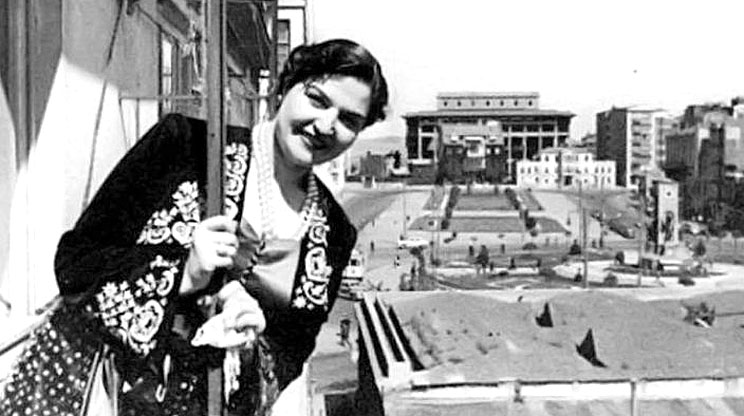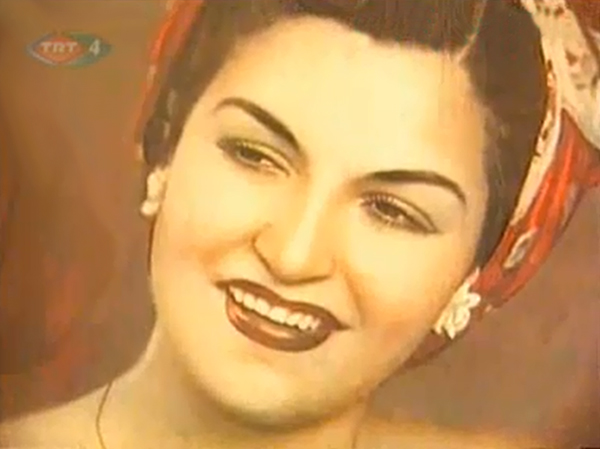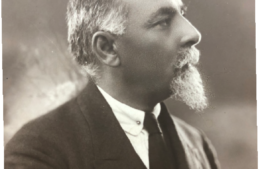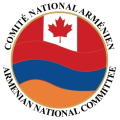From Eliza to Zehra: A ‘Hidden Armenian’ Superstar in Turkey
- (0)

BY UZAY BULUT
On March 26, 1913, an Armenian girl named Eliza was born in Arapgir, a town in Elazig (Kharpert), which is now part of Malatya province in eastern Turkey.
Eliza was incredibly talented. She sang Turkish folk songs of all regions of Anatolia and became the first professional female folk singer in Turkey.
She was also an operetta dancer, a collector of folk songs and a teacher. She worked as an associate professor in the Folk Song Department of the State Conservatory of Istanbul University during the 1990’s. She was called “the mother of Turkish folk songs” (“Turku ana” in Turkish). According to the website of the “Women’s Museum Istanbul,” Eliza’s father’s name was Harutyun.
Sadly, she never publicly embraced her Armenian roots during her career. Turks thought she was Turkish because she used a Turkish name: Zehra Bilir. In 1985, the street in Arapgir where the house she was born is situated, was named “Zehra Bilir.” She passed away at a nursing home on June 28, 2007, in Istanbul.
Today her Armenian identity is no secret. Many sources on the internet state that her original last name was Surhantakyan. But the journalist Bercuhi Berberyan, who used to be close childhood friends with Eliza, wrote in her column in the newspaper Agos last year, that Eliza’s last name was actually Olcuyan:
“Zehra Bilir got her name through marriage… The moment one writes her name on the internet, one sees she is of the Armenian descent. And she is referred to as Eliza Surhantakyan everywhere. I don’t know who determined that, and when and how, but her last name was somehow decided to be Surhantakyan… But it is completely wrong. The real name of Zehra Bilir was Eliza Olcuyan.”
Berberyan explained that she had received an e-mail from Ali Berker Bilir, who introduced himself as the grandson of Zehra Bilir. Berberyan then met Ali in person, who told her that he had no idea where the last name “Surhantakyan” emerged from. “Ali had insistently applied to some places which referred to Eliza with that wrong last name but they responded to him saying ‘This is her actual last name’. How can others know the last name of his grandmother better than Ali does? Ali also sent me a photo of the grave stone of Eliza’s mother, Agavni Olcuyan, where Eliza’s brother Garabet is also resting… Let’s see how the endeavor by Ali who decidedly took on to make the name and legacy of his grandmother live on will end up,” Berberyan wrote.
The journalist Ali Can Sekmec wrote that many of Eliza’s relatives perished during the 1915 Armenian Genocide.
“Eliza’s father Harutyun was a soldier serving in the military during World War I. At what front he fought was never known, and he never returned home. Arapgir–like the entire region–was in chaos during the days of the 1915 tragedy. Many relatives of Eliza, who was just a baby in her mother’s arms back then, were on the deportation lists. Eliza’s mother was desperate. She had a son and three daughters who were very young. She was overwhelmed with fear of being added to the deportees, whose ultimate fate was not known and she did not know what to do. She was a young widow. She eventually accepted the marriage proposal of a Turk from Arapgir and decided to start a new life so that she would escape the nightmare of Armenians of Arapgir: deportation. Maybe her relatives and friends would find her marriage with a Turk odd but she made the sacrifice for her children,” Sekmec wrote.
The Turkish newspaper Sabah conducted an interview with Bilir in 2002. When she was asked to talk about her roots, she said:
“I am originally from Elazig. I don’t remember my father. He was an Armenian. He enrolled in the military and joined World War I when I was one-and-a-half years old. They never heard from him again. He was either shot or died! I know my Turkish father. My name at the registration office was Armenian but I am Turkish and a Muslim.”
When the Sabah reporter asked her what her real name was, she responded:
“It is not necessary. I won’t tell my real name. I am an Armenian convert. But as I said, I do not know my real father.” She added that she was named “Zehra” by a Muslim mufti when she was about to marry a Turk at age 22. And she received her last name “Bilir” from her husband.
In 2007, the journalist Rober Koptas, the former editor-in-chief of Agos, gave a very different explanation on Eliza’s life:
“She received music lessons from the Armenian musician Artaki Candan-Terziyan… She whispered her real name to the Armenian artists and intellectuals she knew in Istanbul but she never made it public. Her first records were produced by a music company owned by Vahram Gesaryan. She got an Armenian painter in Istanbul to make a beautiful painting of her. She was featured several times in Konuk magazine, published by Hagop Ayvaz. Few people who knew her real identity expressed it publicly in order not to put her in a difficult situation.”
Eliza was not the only Armenian artist who hid her Armenian identity from the Turkish public throughout her career. Many famous Armenian actors and musicians in Turkey did the same thing–due to their fear of losing their Turkish fans, careers or even their lives. One was Sami Hazinses (1925-2002), a well-known actor, composer and songwriter. His real name was Samuel Agop Ulucyan, but he never used it.
In one of his rare interviews in 1994–conducted by Yelda Ozcan, a prominent human rights activist and journalist–he was asked about his real ethnic identity. The conversation started bitterly, as Ulucyan did not want to speak about his Armenian origins.
“You don’t want to speak about being an Armenian?,” Ozcan asked.
“Never!” Ulucyan said.
“So you don’t want your Armenian identity to be known?”
“Who told you I am an Armenian?”
When the interviewer insisted, Ulucyan accepted his Armenian origins, saying: “The love they [the Turks] have for me would go away. That’s why I don’t want [my ethnic roots to be known]. Don’t write these things now. First let me die. After I die, you can write them. For now, forget about it.”
Ozcan published the interview in 2003, a year after Ulucyan died. His burial ceremony was held in the Kadikoy Surp Takavor Church. His remains rest in the Hasanpasa Armenian Cemetery in Istanbul.
It was undoubtedly Armenophobia or Armenian-hatred in Turkey that kept Eliza and Samuel from fully embracing their Armenian identity publicly. In Turkey, even the word “Armenian” is used as a swear word by many people – including government and military authorities. Even 102 years after the genocide, Turkey’s small Armenian community of about 60,000 people are often exposed to psychical and verbal attacks.
The Armenian Genocide in Turkey was not only about the slaughter of Armenians in their native lands during WWI. The genocide also aimed to destroy the identity and spirit of the Armenian people, not only during the war, but also during “times of peace”—for decades since the establishment of the Turkish Republic.
This op-ed was originally published in Horizon Weekly’s sister publication The Armenian Weekly on March 30, 2017.



















